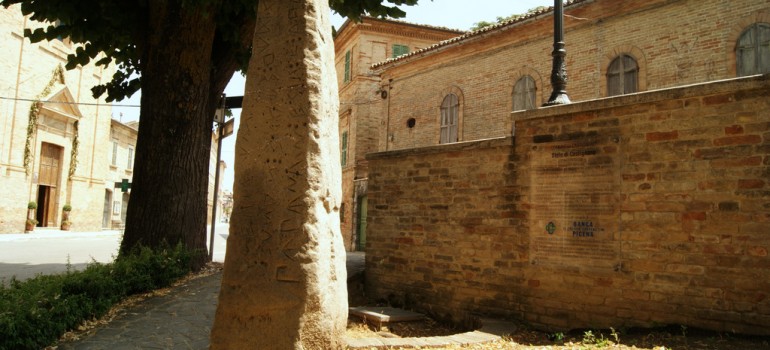
Castignano has the great merit of having given the Italian history the earliest Italic alphabet so far found. It is contained in the famous “stele of Castignano” found in the locality Montecalvo in 1890 is a tufa rock which is now in the Archaeological Museum of Ascoli Piceno. It ‘a funeral stele that has the shape of a memorial stone roughly pyramidal trunk, four-sided, high 1,36, m wide at the base. 0.30 and at the top m. And it has a thickness of 0.15 m. 0.22. Scholars date it back to the sixth-seventh century BC. Registration is bustrophedic: alternately reads from right to left, from left to right. The letters are aligned irregularly with an ease to a snake, similar to the path that follows the plow pulled by oxen. The words, which are recorded with the partial reversal of the letters in the return line, are arranged one after the other and are separated by the use of punctuation marks, in other words by 3 vertical dots. The alphabet seems to derive from a tradition greek-archaic or greek-Mediterranean origin from the Aegean-Anatolian. A far as we know, it would come down to us through the mediation apula that would have taken from the island of Corcyra, or some signs that would suggest a distant relationship Etruscan traceable in the Aegean and Mediterranean so it is certainly the oldest used by the Italic peoples of which we have any record. Scholars, however, have not yet determined whether it should be considered one of the first which reached the peninsula with the arrival of the Italic or if, instead, should be considered a remnant of writing even more archaic. This mystery is made even more fascinating by the fact that the entry of Castignano – in part similar to those of nearby Cupra, Bellante, Bold and Scalelle – manifests a text containing partially indoors, however, elements of language pre – Indo-European. There are doubts about the funeral of the stele: this stone was used in all likelihood to report the existence of a grave. In many necropolis was used to put the corners of the burials of rough stones of different sizes.
Altri monumenti a Castignano
 Lascia un commento
Lascia un commento